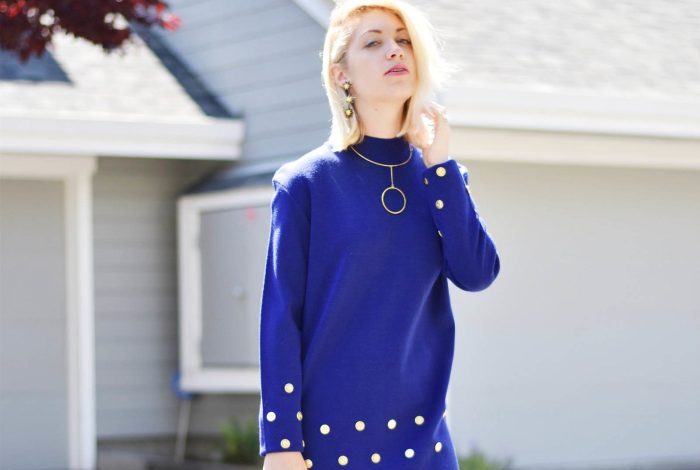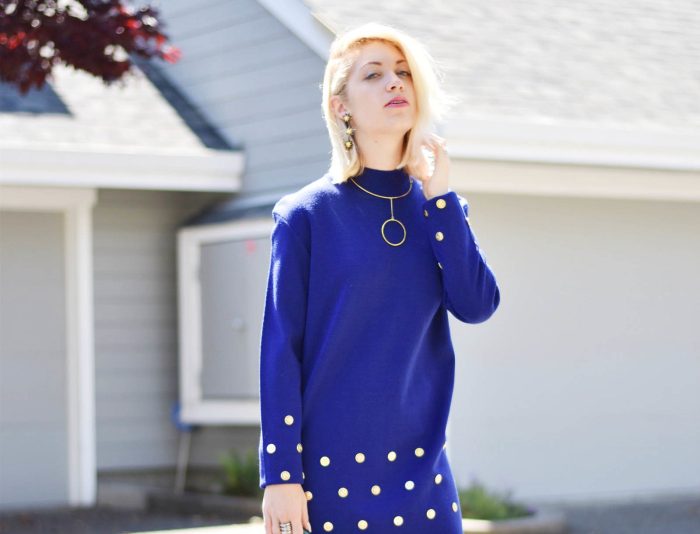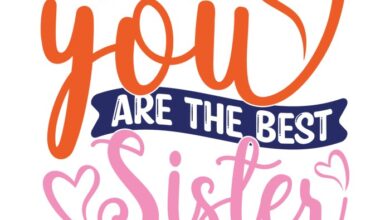
Tips for vintage shopping can unlock a world of unique style and sustainable choices. It’s more than just finding a cool shirt at a thrift store; it’s about discovering hidden gems, learning about fashion history, and making conscious choices that benefit the environment and support independent businesses.
This guide will walk you through the ins and outs of vintage shopping, from identifying authentic pieces to styling them in modern outfits. We’ll explore the ethical and environmental benefits of vintage fashion and provide practical tips to help you navigate the world of vintage finds.
Finding Vintage Treasures
The thrill of discovering a unique vintage piece is undeniable. It’s like unearthing a piece of history, a fashion statement from a bygone era. But finding these treasures requires a keen eye, a bit of patience, and a knowledge of where to look.
Finding Vintage Treasures Online
The internet has opened up a world of vintage shopping possibilities. You can find everything from rare designer pieces to everyday clothing and accessories.
- Online Marketplaces:Sites like eBay, Etsy, and Depop are treasure troves of vintage finds. You can often find unique items at affordable prices. eBay offers a wide selection, while Etsy focuses on handmade and vintage goods. Depop is a popular platform for reselling vintage and secondhand clothing.
- Specialty Vintage Shops:Many online stores specialize in vintage clothing, accessories, and home decor. These stores often curate their collections, offering a more curated and refined selection.
- Social Media:Instagram and Pinterest are great for discovering vintage sellers and finding inspiration. Follow vintage fashion bloggers and influencers for style tips and shop recommendations.
Finding Vintage Treasures Offline
While online shopping offers convenience, there’s something special about browsing through vintage stores and flea markets.
- Thrift Stores and Consignment Shops:These are great places to find affordable vintage pieces. Don’t be afraid to dig through racks and try on clothes. You never know what hidden gems you might find.
- Flea Markets and Antique Shows:These events are a treasure hunter’s paradise. You can find a wide range of vintage items, from clothing and accessories to furniture and home decor.
- Vintage Clothing Stores:Many cities have dedicated vintage clothing stores that specialize in specific eras or styles. These stores offer a more curated selection and often have knowledgeable staff who can help you find the perfect piece.
Authenticating Vintage Pieces
With the rise of vintage fashion, it’s important to know how to identify authentic pieces and avoid replicas.
- Check for Quality:Authentic vintage pieces are typically made with high-quality materials and construction. Look for details like sturdy seams, durable fabrics, and intricate embroidery.
- Examine the Labels:Pay attention to the labels, as they can provide clues about the garment’s origin, age, and authenticity. Look for brand names, size tags, and care instructions.
- Research the Era:Familiarize yourself with the fashion trends of the era in which the garment was made. This will help you identify any telltale signs of authenticity or potential replicas.
- Consult with Experts:If you’re unsure about a piece’s authenticity, consult with a vintage clothing expert or a reputable online resource.
Determining the Value of Vintage Items
Once you’ve found a vintage piece you love, it’s important to know its value.
- Research Similar Items:Use online resources like eBay, Etsy, and vintage clothing forums to compare prices of similar items. Look for sold listings to get an idea of the current market value.
- Consider the Condition:The condition of the item significantly impacts its value. Items in excellent condition with minimal wear and tear are typically worth more than those that are damaged or have been heavily worn.
- Rarity and Demand:Rare items or those in high demand will command a higher price. Consider the brand, designer, and style of the piece.
Negotiating Prices
When buying vintage items, it’s often possible to negotiate the price.
- Be Polite and Respectful:Approach the seller with a friendly and respectful attitude. Express your interest in the item and explain why you think it’s valuable.
- Know Your Worth:Research the item’s value and be prepared to offer a fair price. Don’t be afraid to negotiate, but be realistic and avoid insulting the seller.
- Offer a Counter-Offer:If the seller’s initial price is too high, offer a counter-offer that’s reasonable and reflects the item’s condition and value. Be prepared to walk away if the seller isn’t willing to negotiate.
Getting Started with Vintage Shopping
Vintage shopping is a unique and rewarding experience, but it can be overwhelming for beginners. Understanding your style and body type is essential before diving into the world of vintage clothing. This will help you navigate the vast array of options and make informed choices that align with your personal aesthetic and fit.
Preparing for a Vintage Shopping Trip
Preparation is key to a successful vintage shopping trip. Knowing what to bring and wear can significantly enhance your experience.
Vintage shopping is all about finding hidden treasures, and sometimes, you need a little tech to help you along the way. If you’re looking for a device that’s both stylish and powerful, check out the samsung galaxy note8 final specs.
With its S Pen, you can easily jot down notes about your finds or even sketch out your dream vintage wardrobe. And once you’ve scored that perfect piece, use your Note8’s camera to capture the moment and share your vintage finds with the world.
- Bring a Tote Bag or Backpack:Vintage stores often have limited fitting rooms, so it’s helpful to carry a bag to store your potential purchases. A tote bag or backpack allows you to carry multiple items without feeling weighed down.
- Wear Comfortable Clothes:Vintage clothing can be a bit more challenging to try on, especially if you’re in a crowded store. Wear comfortable clothes that are easy to remove and put back on.
- Bring a Measuring Tape:It’s always a good idea to have a measuring tape on hand to check the actual measurements of vintage garments. This can help you avoid disappointment later on.
- Research Vintage Sizes:Vintage sizing can be inconsistent. Researching vintage size charts and comparing them to your modern measurements will give you a better understanding of what to look for.
- Bring Cash:Many vintage stores and flea markets prefer cash transactions. It’s a good idea to have some cash on hand to avoid any last-minute inconveniences.
Navigating Vintage Stores and Flea Markets
Navigating vintage stores and flea markets can be a sensory overload, but with a little preparation and a strategic approach, you can find some incredible treasures.
- Be Patient:Vintage shopping requires patience. Don’t rush through the racks; take your time to browse and examine the items carefully.
- Ask Questions:Don’t be afraid to ask the vendors about the history of the items or their sizing. They often have valuable insights and can provide helpful information.
- Don’t Be Afraid to Haggle:Haggling is a common practice in vintage shopping, especially at flea markets. Be polite and respectful, but don’t be afraid to negotiate a fair price.
- Consider the Condition:Vintage clothing can range in condition. Examine the items carefully for any signs of wear and tear, stains, or damage.
- Embrace Imperfections:Vintage clothing often has a unique character and charm. Don’t be afraid to embrace imperfections, as they often add to the authenticity and history of the piece.
Caring for Your Vintage Finds: Tips For Vintage Shopping

Once you’ve unearthed those vintage treasures, it’s time to give them the TLC they deserve. Proper care can extend the life of your vintage clothing and accessories, ensuring they remain stylish and wearable for years to come. Here’s a guide to keeping your vintage finds looking their best.
One of the best things about vintage shopping is the stories each piece holds. A faded photograph tucked inside a jacket pocket, a worn-out book with handwritten notes in the margins – they all whisper tales of lives lived.
You can even capture these stories in your own home with dreamy photo art displays , turning your vintage finds into captivating focal points. The right display can bring out the beauty and character of your vintage treasures, adding a touch of nostalgia and personality to your space.
Cleaning Vintage Clothing and Accessories
Before cleaning any vintage item, it’s crucial to assess its material and condition. Delicate fabrics like silk or lace require gentle handling, while sturdier materials like cotton or wool can withstand more vigorous cleaning methods.
Vintage shopping is all about finding those unique pieces that tell a story. It’s about unearthing treasures that have stood the test of time, like a pair of classic Jimmy Choo’s signature ballet pumps made in Italy. These pumps are a timeless example of how quality craftsmanship can last for decades, and that’s what vintage shopping is all about.
So, when you’re on the hunt for vintage finds, keep your eyes peeled for those pieces that exude quality and timeless elegance.
- Handwashing: For delicate items, handwashing is the safest option. Use a mild detergent designed for delicates and cool water. Gently squeeze the water out of the garment, avoiding twisting or wringing.
- Dry Cleaning: If unsure about a garment’s cleaning instructions, dry cleaning is often the best choice. Choose a reputable dry cleaner specializing in vintage clothing, as they have experience handling delicate fabrics and vintage techniques.
- Spot Cleaning: For small stains or marks, spot cleaning with a damp cloth and mild detergent can be effective. Test the cleaning solution on a hidden area first to ensure it doesn’t damage the fabric.
- Leather and Fur: Leather and fur items require specialized cleaning methods. Avoid using harsh chemicals or water on these materials. Instead, use a leather cleaner or a dry cleaning method specifically designed for fur.
- Jewelry: Vintage jewelry can be cleaned with a soft cloth and mild soap. Avoid using harsh chemicals or abrasive materials, as they can damage the metal or gemstones.
Repairing and Altering Vintage Items
Vintage clothing often requires minor repairs or alterations to ensure a perfect fit and extend its lifespan.
- Sewing: Simple repairs like replacing buttons, mending seams, or patching holes can be easily done with basic sewing skills.
- Tailoring: For more complex alterations, such as taking in seams or adjusting the length, consult a professional tailor. They have the expertise to ensure the alterations are done correctly and maintain the integrity of the garment.
- Shoe Repair: Vintage shoes can be restored to their former glory with the help of a skilled cobbler. They can repair worn soles, replace heels, and clean and polish the leather.
Storing Vintage Items, Tips for vintage shopping
Proper storage is essential for preserving the condition of your vintage finds.
- Acid-Free Paper and Boxes: Store clothing and accessories in acid-free paper or boxes to prevent discoloration and damage. Avoid using newspaper or cardboard, as they can release acidic compounds that can harm your items.
- Climate Control: Store vintage items in a cool, dry, and well-ventilated area. Avoid storing them in damp or humid environments, as this can lead to mildew and mold growth.
- Moth Protection: Mothballs or cedarwood are effective deterrents for moths. Place mothballs or cedarwood chips in storage containers or garment bags to protect your vintage items.
- Hanging and Folding: Hang delicate items on padded hangers to prevent stretching or creasing. Fold heavier fabrics and store them flat in drawers or boxes.
Styling Vintage Pieces

Vintage pieces offer a unique charm and character that can elevate any modern outfit. They can add a touch of nostalgia, individuality, and a sense of history to your wardrobe. The key to styling vintage pieces successfully is to find a balance between embracing their retro appeal and incorporating them seamlessly into your contemporary style.
Blending Vintage with Modern
Vintage pieces can be effortlessly incorporated into modern outfits by using them as statement pieces or by mixing them with contemporary clothing and accessories.
- Statement Pieces:A vintage dress, blazer, or handbag can instantly transform a simple outfit into a stylish ensemble. Pair a vintage slip dress with a modern leather jacket and chunky boots for a chic and edgy look. A vintage blazer can add structure and sophistication to a casual jeans and t-shirt combo.
A vintage handbag can serve as a focal point and add a touch of vintage elegance to any outfit.
- Mix and Match:Combining vintage pieces with contemporary items allows for a more balanced and modern aesthetic. A vintage floral skirt can be paired with a plain white tee and sneakers for a casual yet stylish look. A vintage silk scarf can be tied around a modern handbag or used as a belt to add a pop of color and texture.
Vintage jewelry can be layered with contemporary pieces for a unique and personalized style.
Retro Styles
Retro styles draw inspiration from specific eras in fashion history, such as the 1950s, 1960s, and 1970s.
- 1950s:This era is characterized by full skirts, cinched waists, and feminine silhouettes. Look for vintage dresses with full circle skirts, petticoats, and cardigans. A classic 1950s style outfit can be achieved by pairing a vintage dress with a cardigan, cat-eye sunglasses, and ballet flats.
- 1960s:The 1960s saw the rise of mod fashion, characterized by geometric patterns, mini dresses, and bold colors. Look for vintage shift dresses, A-line skirts, and colorful geometric prints. Pair a vintage mini dress with a pair of white go-go boots and a bold statement necklace for a classic 1960s look.
- 1970s:The 1970s were known for their bohemian and disco styles. Look for vintage bell-bottom jeans, flowy blouses, and embroidered details. A vintage maxi dress with a crochet top and platform sandals embodies the bohemian spirit of the 1970s.
Bohemian Styles
Bohemian style is all about embracing free-spiritedness and individuality.
- Vintage Dresses:Flowy maxi dresses with floral prints, crochet details, or embroidery are essential for bohemian style. Layer a vintage maxi dress with a denim jacket or a cardigan for a more casual look.
- Embroidered Tops:Vintage embroidered tops with floral or geometric patterns can add a touch of bohemian flair to any outfit. Pair a vintage embroidered top with high-waisted jeans, a flowy skirt, or a vintage maxi dress.
- Layered Jewelry:Layering vintage jewelry, such as necklaces, bracelets, and rings, is a key element of bohemian style. Choose pieces with natural elements, such as stones, wood, or feathers, to enhance the bohemian aesthetic.
Minimalist Styles
Minimalist style emphasizes simplicity and clean lines.
- Vintage Basics:Look for vintage pieces that are timeless and versatile, such as a white button-down shirt, a black turtleneck, or a tailored blazer. These pieces can be easily dressed up or down and can be incorporated into various minimalist outfits.
- Structured Silhouettes:Vintage pieces with structured silhouettes, such as a vintage trench coat or a tailored skirt, can add a touch of sophistication to a minimalist outfit. Pair a vintage trench coat with a simple dress or a pair of jeans and a t-shirt.
- Minimalist Accessories:Vintage jewelry with simple designs, such as a delicate chain necklace or a pair of stud earrings, can complement a minimalist outfit without overpowering it. A vintage leather belt can add a touch of texture and detail to a minimalist ensemble.
The Ethical Side of Vintage Shopping
Vintage shopping isn’t just about finding unique pieces; it’s a conscious choice that benefits the environment and supports ethical practices.
Environmental Benefits
Buying vintage clothing reduces the demand for new clothes, which are often produced using unsustainable practices. The fashion industry is a significant contributor to pollution, water consumption, and greenhouse gas emissions. By choosing vintage, you’re directly contributing to a more sustainable fashion system.
The fashion industry is responsible for about 10% of global carbon emissions, according to the United Nations Environment Programme.
Social Impact
Supporting vintage businesses and artisans helps to preserve traditional skills and crafts. It also provides a platform for small businesses and independent designers to thrive.
Ethical Shopping Tips
Shopping vintage ethically is about making conscious choices that align with your values. Here are some tips to ensure you’re shopping responsibly:
- Choose reputable vintage stores:Look for stores that prioritize ethical sourcing and fair labor practices. Ask about their sourcing policies and the origin of their products.
- Support local vintage businesses:Shopping from local vintage stores helps to support your community and reduces the environmental impact of shipping goods from afar.
- Consider the condition of the garment:Choose well-made items that will last. Avoid buying heavily damaged or worn-out pieces that will likely end up in landfills.
- Repair and repurpose:Instead of discarding damaged vintage pieces, consider repairing them or repurposing them into something new. This extends the lifespan of your clothes and reduces waste.
- Learn about the history of your garments:Take the time to research the history of your vintage pieces. This can help you understand their origins and appreciate the craftsmanship involved in their creation.






